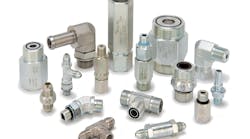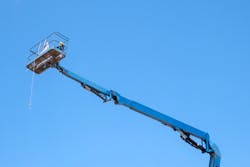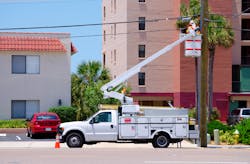How Check Valves Benefit Hydraulic Systems and Machine Safety
Safety is critical when working with heavy-duty vehicles or equipment such as work trucks with aerial work platforms. Hydraulic check valves can play an important role in ensuring safety is maintained should these or other similar types of vehicles require maintenance or experience an emergency situation.
According to Parker Hannifin, despite the small size of check valves they can be a vital component in helping minimize equipment damage, limit project downtime and assure worker safety.
What is a Check Valve?
The purpose of a check valve is to control the direction of flow and maintain pressure in hydraulic systems. Doing so ensures hydraulic fluid flows in the desired direction, preventing any potential damage from occurring. Its use for maintaining system pressure helps to optimize performance and system readiness.
Valves are typically comprised of a body, poppet, spring and retainer, making them a simple and compact component.
Various check valve options exist, such as hard seat and soft seat options; various sizes, pressure ratings and flow capacities are available as well. Each has its place in particular applications, making it critical for design teams to understand the desired parameters and system requirements before carefully selecting the appropriate hydraulic check valve.
How Check Valves aid Safety
Check valves can play a critical role during equipment downtime or if emergency operations should occur with heavy-duty vehicles by maintaining hydraulic system pressure and preventing backflow or back pressure. The latter is necessary to prevent damage to emergency pumps which may be integrated onto a vehicle — common with work trucks operating aerial work platforms.
These emergency pumps are used as a backup to the main hydraulic pumps in a vehicle. Should the main pumps fail, a backup is necessary to ensure vital vehicle functions can still be completed, such as lowering the work platform which typically has people in it.
A check valve prevents backflow, and thus damage to the emergency pumps, by letting hydraulic fluid flow in only one direction. Check valves can also prevent foreign particles or debris from entering the hydraulic system, further protecting pumps and other components from damage caused by contamination.
As check valves help to maintain system pressure, their use ensures emergency pumps and other hydraulic system components perform as desired at all times including during emergency operations.
In addition, should the hydraulic line rupture, check valves which have been installed on the vehicle's hydraulic lift cylinder can prevent the aerial work platform from suddenly dropping and causing injury or damage to people on the vehicle and objects in the vicinity.
Benefits of Using Check Valves
Parker Hannifin outlines several benefits which can be achieved when the right check valve is chosen for an application such as trucks operating aerial work platforms.
- Enhancing Efficiency: Check valves prevent the loss of hydraulic pressure in the system, helping to ensure that the hydraulic system operates efficiently. This can help improve the performance of the truck and enhance overall productivity.
- Protecting Equipment: Check valves can help protect the hydraulic system and other equipment in the truck from damage caused by back-flowing fluid. This can help extend the life of the equipment and reduce the need for repairs.
- Ensuring Operator Safety: Check valves help ensure the operator's safety by preventing the boom or bucket from falling in the event of a hydraulic failure. This helps protect the operator from injury and helps prevent damage to the surrounding area.
- Prevents System Contamination: Check valves can prevent hydraulic fluid from flowing back into the system and contaminating it with dirt or other foreign materials, which can cause damage to the pump and other components.
- Saves Money: By preventing damage to the hydraulic system, check valves can help extend the life of the pump and other components, reducing maintenance and repair costs over time.
*Editor's Note: This article is based on information supplied by Parker Hannifin.




